Dambusters autograph album sells for £5,800 at auction
- Published

An album containing autographs of members of the World War Two Dambusters squadron has sold at auction for £5,800.
The book was compiled by the fleet's senior medical officer as a ninth birthday gift to his son in 1943.
Autographs include Flt Cdr Henry Melvin "Dinghy" Young, second in command of the raid, who was shot down and killed on his return.
The book was sold in Newark, Nottinghamshire.
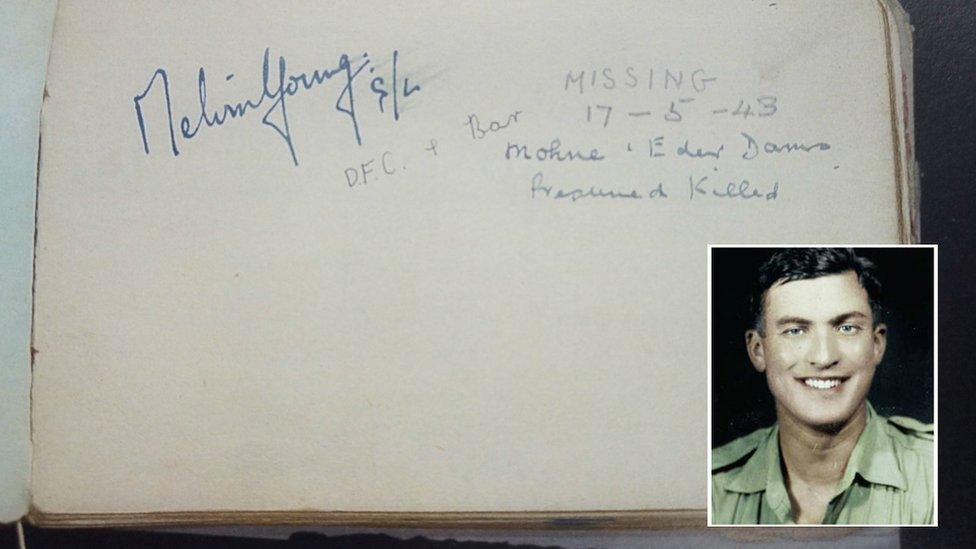
The autograph book contains the signature of Dambusters second in command Henry Young, who was killed in action
The seller's father collected the signatures at the RAF base at Scampton, Lincolnshire, where Squadron 617 - better known as the Dambusters - was formed in March 1943.
Bombing raids on three major dams in Germany's industrial Ruhr Valley took place in May using Barnes Wallis' bouncing bomb. Of the 19 planes that went, eight were lost.
Henry Young - known as "Dinghy" because he survived two crashes into the sea in an inflatable boat - flew an Avro Lancaster, codenamed A-Apple, in the first wave, which attacked the Möhne Dam.
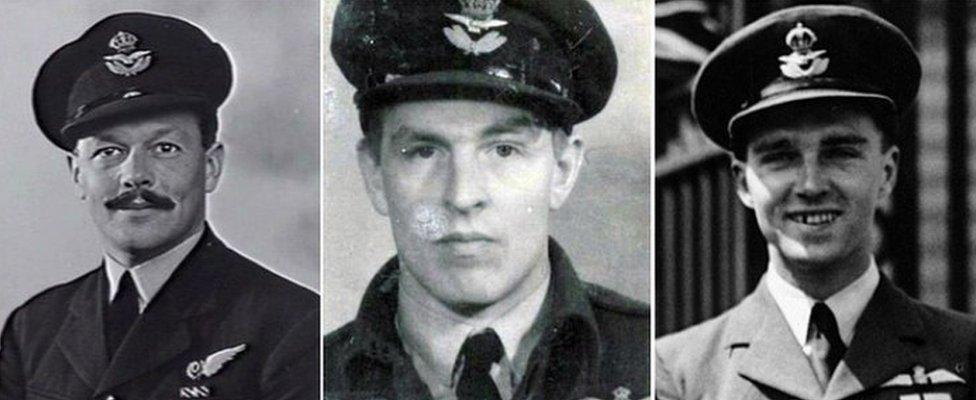
Other Dambusters' signatures include Australian Flight Lieutenant Robert Hay, who was a bomb aimer, and British pilots William Townsend and William Astell
There are signatures from members of other squadrons based at Scampton, including Gp Capt Robert McFarlane, who later led a Lancaster Bomber squadron at the height of the Battle of Berlin, and Flying Officer Chas Walker, an Australian professional cricketer who was killed in action in December 1942.
Some added illustrations to their signatures, including a detailed drawing of a Lancaster in flight, a picture of a kangaroo by an Australian airman and a pair of cartoon airmen, captioned, "Jolly good show, what?!!".
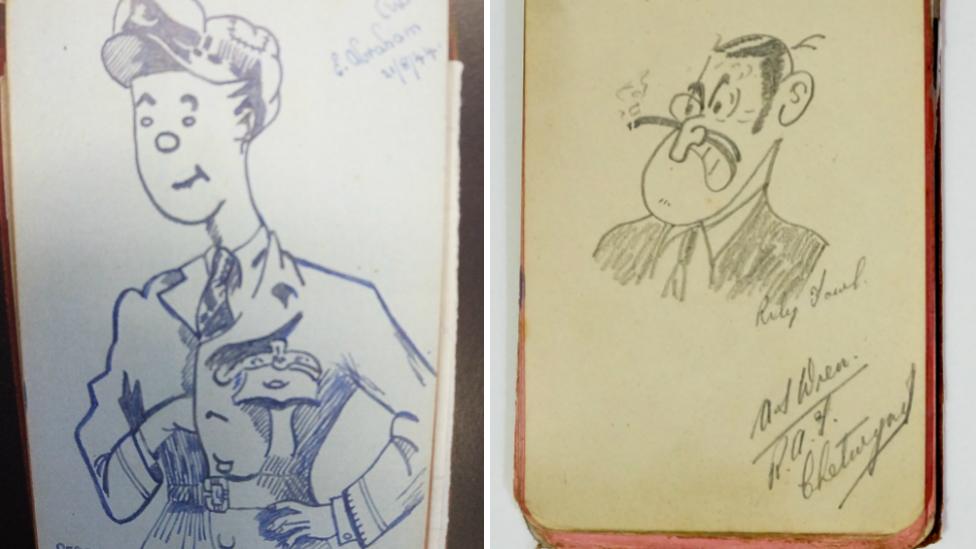
James Brown, who sold the album, was also selling a silk map which was rescued from a burnt-out Lancaster bomber and the official warrant appointing his father as flying officer.

Dambusters raid
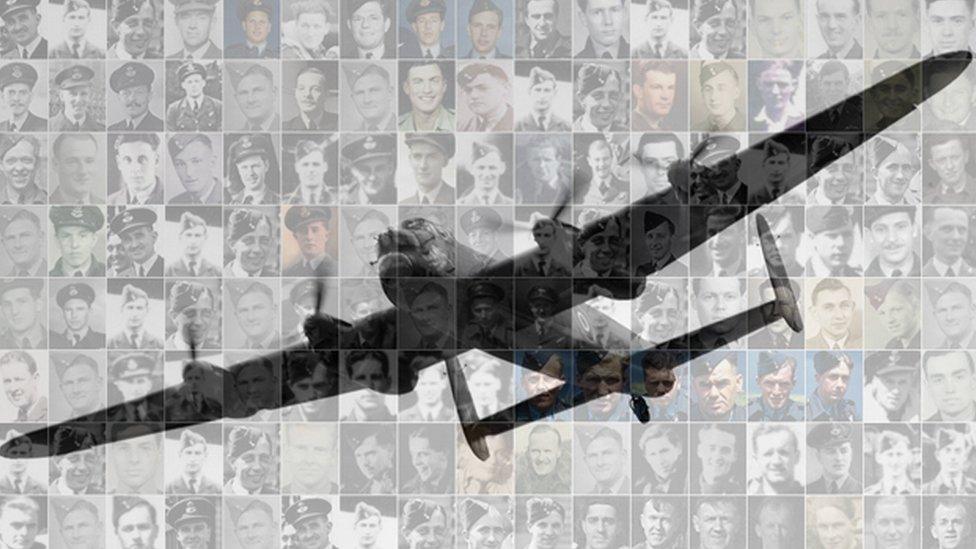
The audacious attack on German reservoirs in the Ruhr Valley with "bouncing bombs" was a major coup for the British
Immortalised in the Dambusters film, the aim was to flood a vast area in one raid
19 bombers left RAF Scampton near Lincoln in three waves on the night of 16 May 1943. The first headed to the Möhne and the Eder Dams, the second and third to the Sorpe dam
Out of the 133 crew that set off, only 77 returned, including Sqn Ldr Munro, who made it home after flak destroyed the internal and external communications in his Lancaster bomber over the Netherlands
He had been briefed to attack the Sorpe Dam by releasing the bomb from the lowest possible height, while flying at 180 mph (290 km/h)
The Sorpe Dam was damaged but the Mohne and Eder Dams were destroyed, flooding the Ruhr valley and killing an estimated 1,300 people, mostly civilians

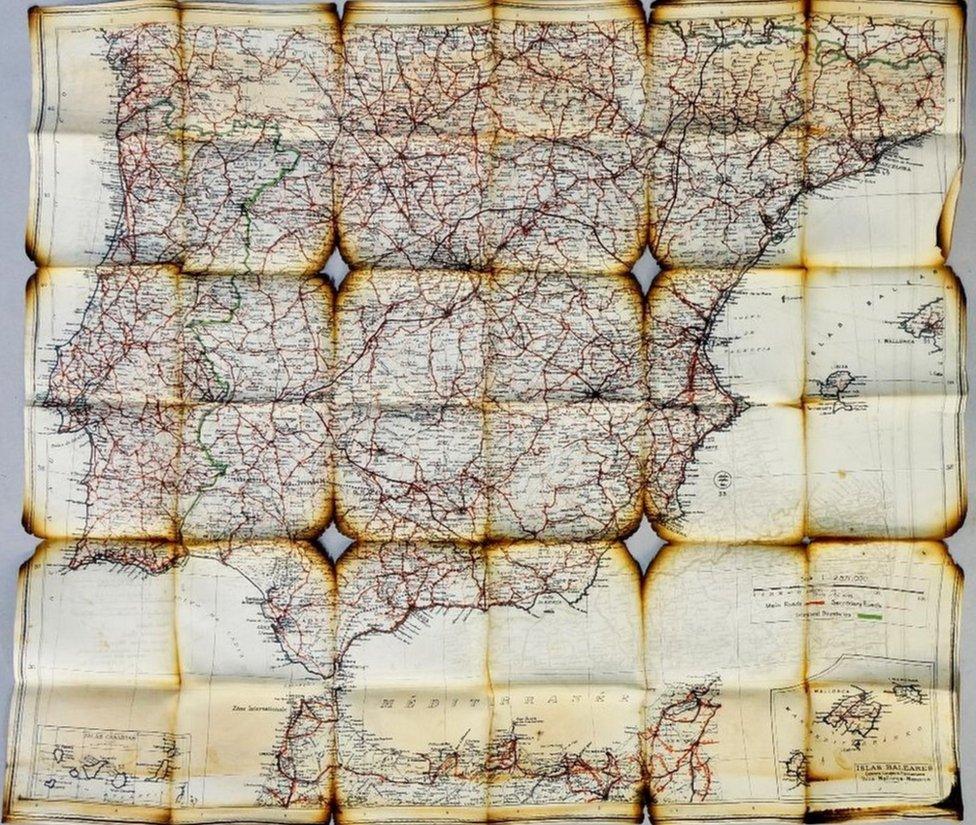
A silk map was rescued from a burnt-out Lancaster bomber
- Published21 November 2015

- Published19 November 2015
